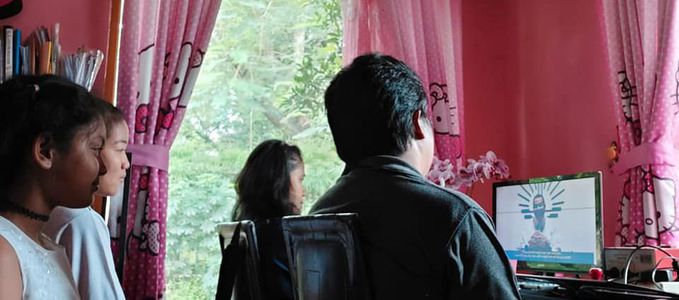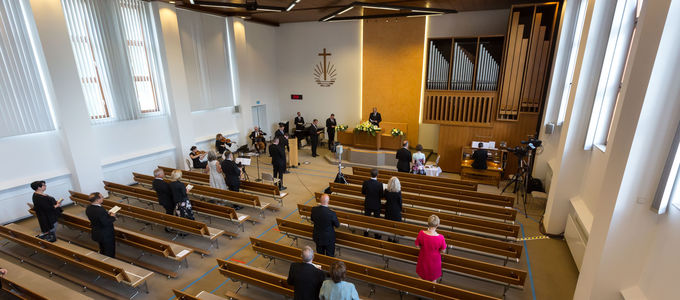
Locked church doors, divine services on YouTube, mouth and nose protection at the altar: the pandemic really shook up church life in 2020. It was the year of COVID-19. Following is a chronicle of the year’s events.
It all began very gradually. At the start of March the motto was still: “Don’t panic, but use appropriate hygiene.” Then came the instruction to “wash hands frequently and thoroughly”. And soon after: “Members can decide on their own whether to participate in divine services.”
And suddenly the doors were closed
The requirements tightened sharply when the World Health Organisation declared a pandemic on 11 March: extraordinary hand hygiene was recommended. Members were asked not to attend church services if they presented any cold symptoms and were told to refrain from shaking hands or embracing when greeting one another or saying goodbye.
And then everything happened very quickly in the turbulent period between the eleventh and twelfth weeks of the calendar year: the churches in Italy were the first to shut down, then came those in Germany and Canada. This was followed by congregations in South-East Asia, South America, Niger, the Western Pacific, the USA, and the Democratic Republic of Congo—at a rate of one region almost every day.
How the divine services reached the believers
“If the believers cannot come to the divine services, then the divine services will come to the believers.” It was under this motto that the District Churches around the world began broadcasting divine service transmissions out of the blue: North America and South Africa had a bit of a head start with their streaming portals and television networks, respectively. In other places, YouTube became the central gathering point for churchgoers on Sundays. Since then, everyone has been posting the latest links on nac.today—and these remain the most frequently accessed posts to date.
District Churches in which only a fraction of the population have sufficient internet access—if any at all—had to take a different approach. In the Democratic Republic of Congo South-East, for example, ministers went from house to house to hold a brief devotional and celebrate Holy Communion. The District Church, which is home to some 1.8 million members, even went so far as to reactivate all of its retired ministers to serve as reinforcements.
Church life withstands the crisis
Streamed divine services soon became a firmly established component of church life, which even met with interest from the media. In addition, the Church’s leadership provided spiritual inspiration for the space of time stretching between Sundays, and regularly provided outlines for devotionals. And because congregational celebrations of Holy Communion had to be suspended, the three large wafer bakeries in Germany, Zambia, and South Africa reduced—and eventually ceased—production.
In the meantime, the members of the Church began to show what they were made of. Many volunteers invested their energy and free time to keep church life going. Children’s lessons, ministers’ meetings, and even the meeting of the District Apostles were transformed into video conferences. Choir practices and musical performances all took place in a virtual context. And five young Germans were even able to snatch up some start-up funding in a government-sponsored competition using their “Meinegemeinde.digital” web toolkit.
The long way back into God’s house
For many people, the COVID-19 crisis was just another emergency situation with which they had to deal. Countries in the south of the globe in particular have long been engaged in a battle for their very survival. The New Apostolic aid organisations around the world did their best to help alleviate the worst of these situations. This meant that helpers were now confronted by some completely new challenges which they were only able to tackle by applying some rather unusual ideas.
In late April, the Church leadership began to explore the possibilities of reopening the congregations, and started working on guidelines for this process. It was to take until June—if it even happened at all—before believers could physically attend divine services in many places. The number of participants was limited to make it possible for congregations to adhere to the prescribed physical distancing regulations. Since then, safety markings, protective masks, and disinfectants have come to define the picture in the naves of our church buildings.
However, in South America only about six per cent of all congregations were ever allowed to open again. And in Austria the church buildings were closed once again at the start of December in the context of a nationwide lockdown. Meanwhile, the number of cases is still increasing, and the situation remains tense. Yet the Church is well prepared. A minister who served along in one of the early video services summed it up this way: “It felt like a church without borders or walls.”






















